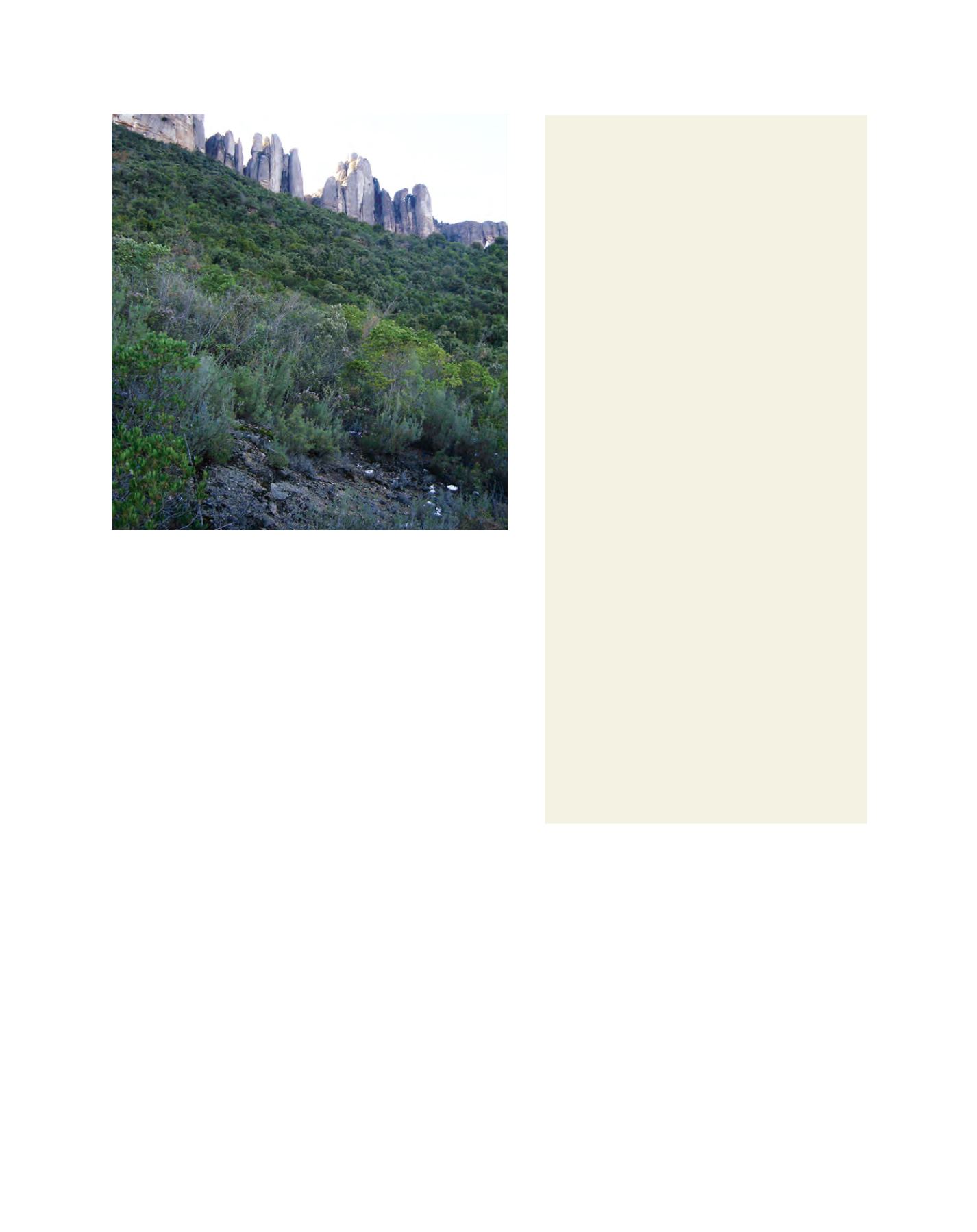

[
] 127
programme with which the Government won the general election of
2000, so a very strong direction was applied from the political level to
the planning team. Finally a draft was presented to the 64 members of
the National Forest Council in its first meeting in January 2002. This
participatory institution included all the parties mentioned above.
From 30 papers received while drafting the plan, 581 concrete
statements were extracted and organized in a database, of which
40 were general statements on issues not covered by the plan. A
further 312 were accepted for inclusion in the draft, while 119
were rejected, either because they did not fall within the scope of
a national planning instrument or because they did not fit in with
the spirit of the Strategy. The remaining 110 allegations were tabled
for discussion in a Council meeting, which considered three issues:
how the policy should deal with privately owned forests, matters
regarding production and productivity and the cost and budget of
the Plan itself. Debates on these issues took place in two sessions,
and after formal approval by the Council and by the coordination
system with the regional governments, the Government gave its
formal approval to the Spanish Forest Plan at the beginning of July.
This planning was considered flexible enough to allow regional poli-
cies to be developed, while setting common objectives for all of them
in an inclusive manner, demonstrating equity and proportionality to
foster cohesion between territories.
A legal framework for sustainability
The existing Spanish forest legislation dating back to 1957 was
retained as the basis for a new and more political act. A draft of the
new law was updated while changes were made to the Forest Plan,
as its main purpose was to translate the elements of the Plan into
legal language.
A draft of the new Forests Act was provided on 9 January 2003 to
the members of the National Forest Council and on this occasion
43 comments were received, with more than 1,200
questions raised about the legal text. The process
tested with the Plan was repeated, trying to address as
many of these issues as possible. Two more drafts were
discussed, with many compromise solutions suggested.
Finally, on 24 February, with 37 votes for, 3 against
and 10 abstentions, the Council approved the final
text. The entire process took only 6 weeks.
The final text was immediately sent to the
Government, which, following legal consultations,
approved it as ‘legislative project’ on 21 March –World
Forest Day – and sent it to Parliament. It was modified
in both legislative chambers and finally signed by the
King on 21 November. In a fitting finale to this crucial
piece of legislation, it was the last act approved in the
legislature before Parliament was dissolved.
In Spain there are some forests with no trees
Image: BDN
The example of Navarra
In the Foral Community of Navarra in Northern Spain, 64
per cent of the million hectares of land consists of forests,
with 24 per cent growth in the last 20 years. As in the rest
of Spain, this region experiences high climatic diversity, so
it is well suited to pilot projects.
The Forest Service in Navarra decided to modify the
legal scheme for forest planning that was in force in
the rest of Spain and to create a system more suited
to its own forests. The methodology for elaboration of
planning documents was radically changed, including
all uses, resources and values of the forest, analysing
their compatibilities and setting different objectives for
each part of the tree-covered areas, shrub areas and
pastures. In addition, requirements for habitat and species
conservation were integrated.
Relationships among trees, cattle, protected species
and other resources and values were integrated in the
planning instrument with a view to creating a more flexible
planning system to ensure natural regeneration. There was
also a substantial decrease in the price of the instrument
itself and an increase in its potential to be applied to
smaller forests.
At the same time, procedures for the active participation
of owners (mainly municipalities) were set in place, making
them more involved in forest planning, improving tender
procedures by demanding applicants have knowledge
of the territory and its conditions and that they work in
multidisciplinary teams. This resulted in the creation of
local technical teams that today continue advising forest
owners on technical matters.
During these years, there have been continuous
updates to the scheme, both as a consequence of its
implementation and due to emerging situations, such as
those related to forest certification. Nowadays indicators
of sustainability for the two main certification schemes
present in Spain (Programme for the Endorsement of
Forest Certification and Forest Stewardship Council)
are included in the planning instruments, allowing the
owner voluntarily to join either or both of them. Simpler
instruments have also been introduced for small privately
owned forests.
As a consequence, today more than 60 per cent of
forest land benefits from a planning instrument (the
average in Spain is about 12 per cent) and 43 per cent is
certified, with 84 per cent of regional timber being certified.
It must be said that these figures reflect true management
as the Forest Service verifies the data, which are accepted
by all those involved.
















